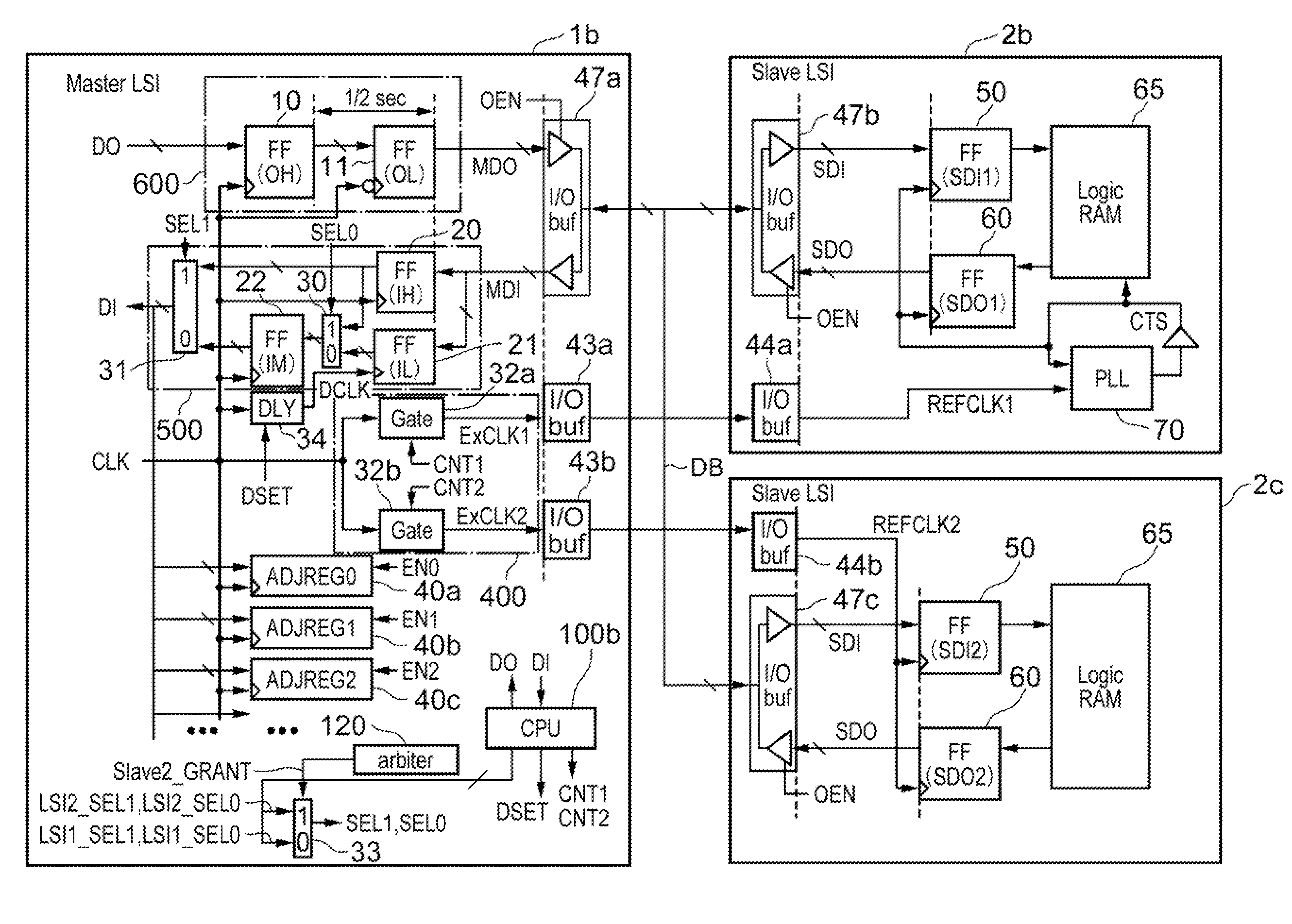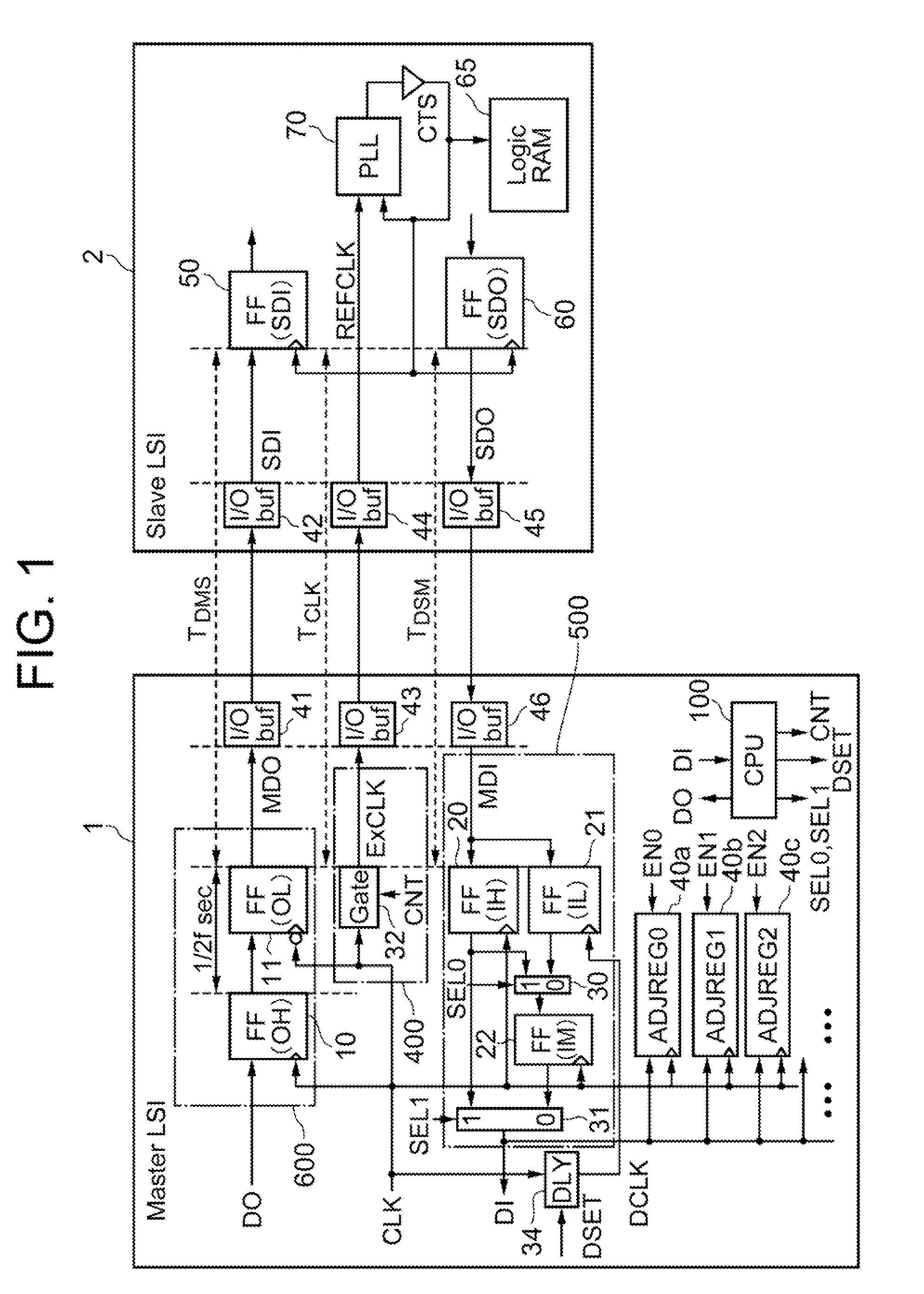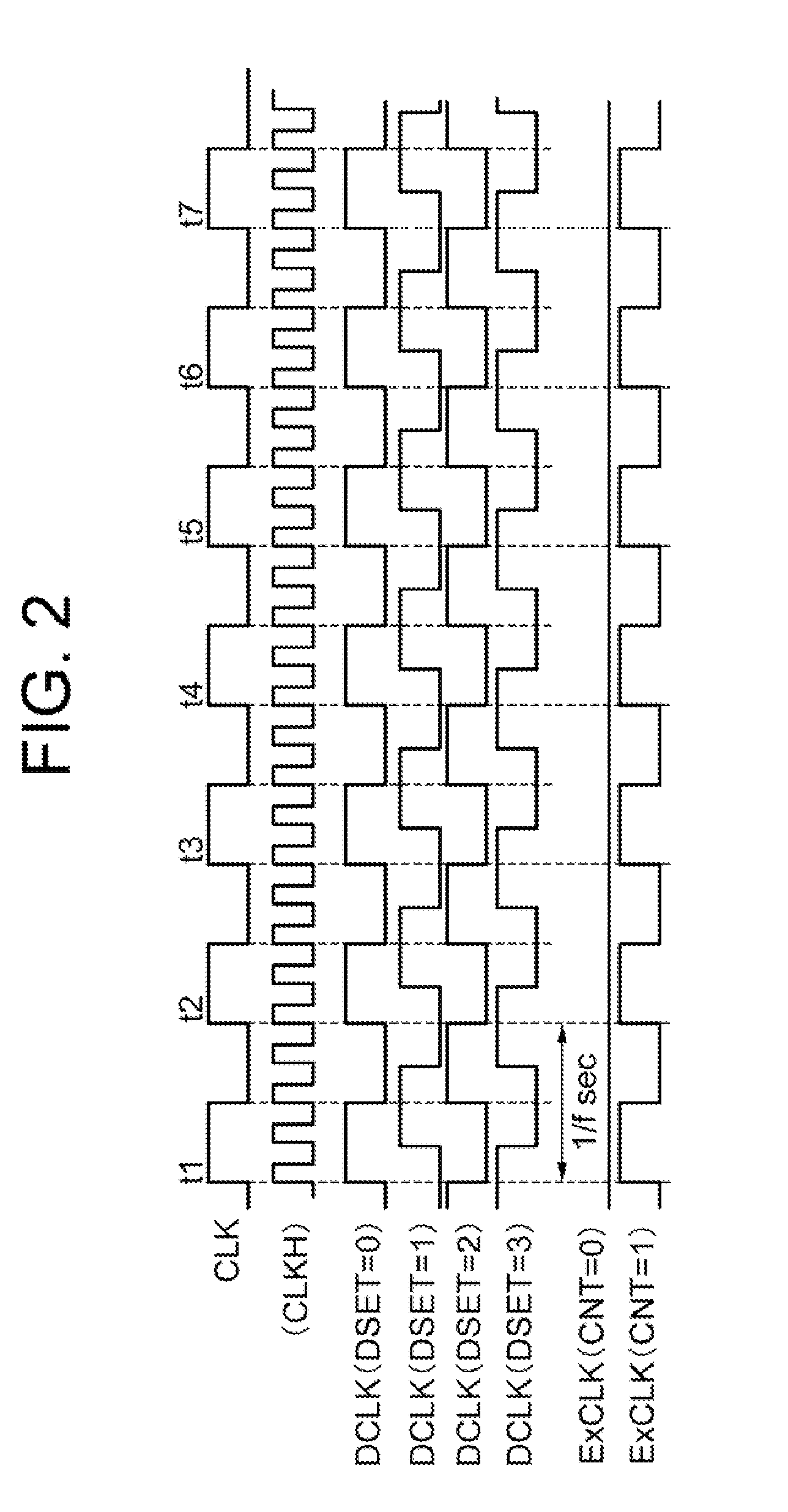Data transfer device and data transfer method
a data transfer device and data transfer technology, applied in the direction of digital transmission, generating/distributing signals, instruments, etc., can solve the problems of generating a difference in timing on the entire system, difficult to conduct the action timing verification equivalent to the actual device with bit precision, and using a relatively complicated circuit device, etc., to achieve secure the margin of setup time, increase verification precision, and not deteriorate the effect of data transfer throughpu
- Summary
- Abstract
- Description
- Claims
- Application Information
AI Technical Summary
Benefits of technology
Problems solved by technology
Method used
Image
Examples
first exemplary embodiment
[0022]FIG. 1 is a block diagram showing the structure of the data transfer device according to the first exemplary embodiment of the invention. In following explanations of each of the exemplary embodiments, described is a case where the data transfer device according to the exemplary embodiments of the invention is mounted into the master LSI, and a slave LSI is used as the partner device.
[0023]The master LSI includes: flip-flops 10(FF(OH)), 11(FF(OL)), 20(FF(IH)), 21(FF(IL)), 22(FF(IM)), selecting circuits (selectors) 30, 31, a gate circuit 32, phase adjusting registers 40a(ADJREG0), 40b(ADJREG1), 40c(ADJREG2), - - - , input / output buffers 41, 43, 46, a delay register (DLY) 34, and a control processor (CPU) 100. Further, the slave LSI2 includes input / output buffers 42, 44, 45, flip-flops 50(FF(SDI)), 60(FF(SDO)), a PLL circuit 70, and an internal circuit 65 such as RAM and a logic circuit.
[0024]In the first exemplary embodiment shown in FIG. 1, the gate circuit 32 and the like for...
example 1
[0070]FIG. 9 shows a case where the data transfer device according to the first exemplary embodiment of the invention shown in FIG. 1 is applied to a W-CDMA (Wideband Code Division Multiple Access) digital base band (DBB) LSI system having an HSDPA (High Speed Downlink Packet Access) function expansion which is one of examples of an accelerator expansion system that uses a plurality of LSIs.
[0071]The WCDMA DBB LSI as a master LSI1a is provided with: a processor (CPU) 100a for controlling the entire W-CDMA digital base band LSI system; a clock control circuit 300 (CLK Ctrl); and bus controller circuits 201, 202 (BUSC1, BUSC2) which conduct data transfer with a slave LSI2a. The clock control circuit 300 supplies a clock signal CLK used for transfer and a clock signal DCLK used for phase adjustment to the bus controller circuits 201, 202. Further, the HSDPA DBB LSI as a slave LSI2a is provided with: bus interface circuits 203, 204 (BUSIF1, BUSIF2) which conduct data transfer with the m...
second exemplary embodiment
[0074]FIG. 10 is a block diagram showing the structure of a data transfer device according to a second exemplary embodiment of the invention. The second exemplary embodiment shown in FIG. 10 is structured in such a manner that a data output circuit 600 transfers transfer data to a plurality of partner devices 2 via a common data bus DB, and a data receiving section 500 selects the latch timing based on which partner device out of the plurality of the partner devices is using the data bus DB. In the case shown in FIG. 10, the data output circuit 600 is formed with flip-flops 10, 11, and the like. Further, the data receiving section 500 is formed in the same manner as the one shown in FIG. 1. Furthermore, a clock sending section 400 is formed with gate circuits 32a, 32b, and the like. The clock sending section 400 may include input / output buffers 43a and 43b.
[0075]Hereinafter, the second exemplary embodiment of the invention will be described in a specific manner. In FIG. 10, the sam...
PUM
 Login to View More
Login to View More Abstract
Description
Claims
Application Information
 Login to View More
Login to View More - R&D
- Intellectual Property
- Life Sciences
- Materials
- Tech Scout
- Unparalleled Data Quality
- Higher Quality Content
- 60% Fewer Hallucinations
Browse by: Latest US Patents, China's latest patents, Technical Efficacy Thesaurus, Application Domain, Technology Topic, Popular Technical Reports.
© 2025 PatSnap. All rights reserved.Legal|Privacy policy|Modern Slavery Act Transparency Statement|Sitemap|About US| Contact US: help@patsnap.com



